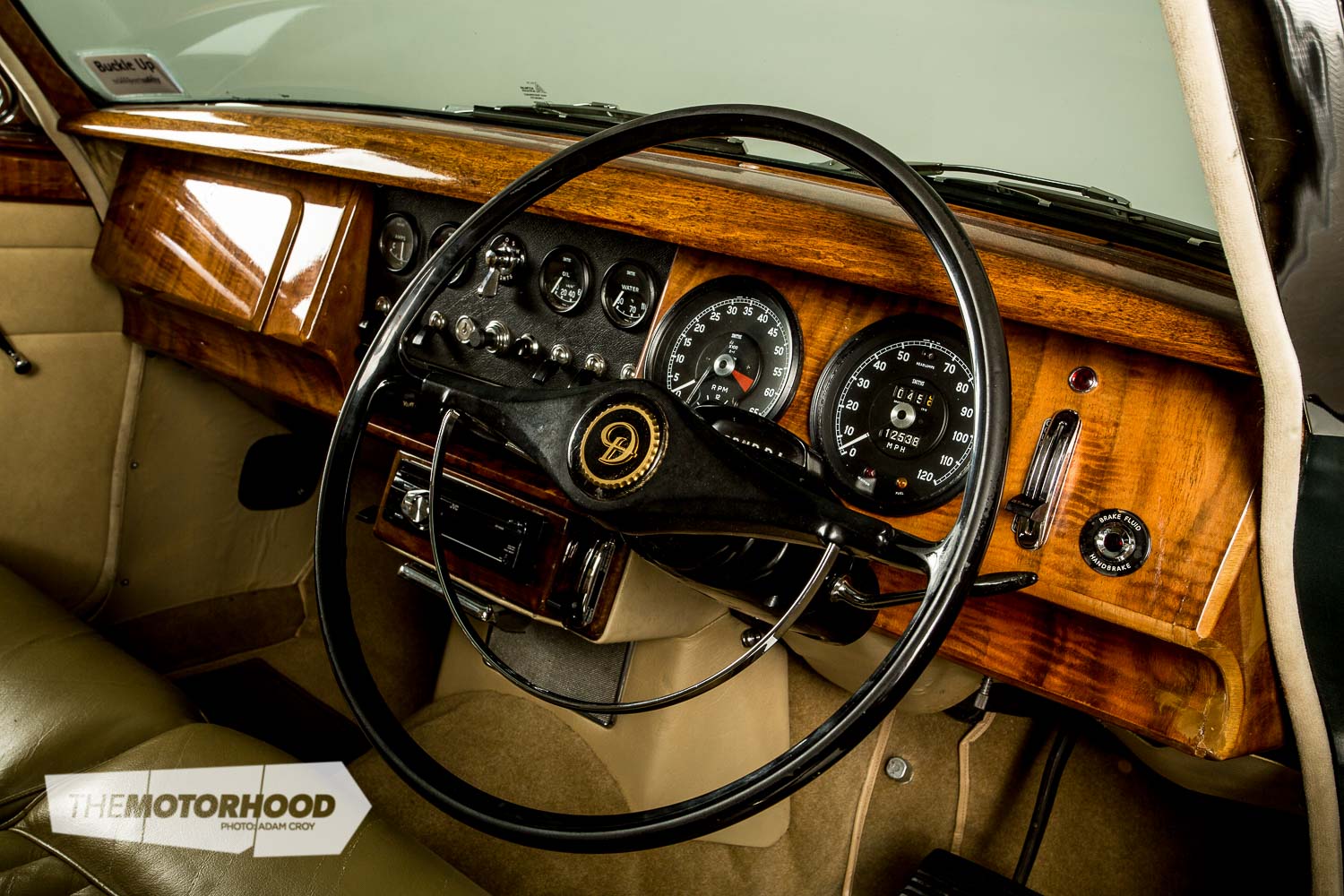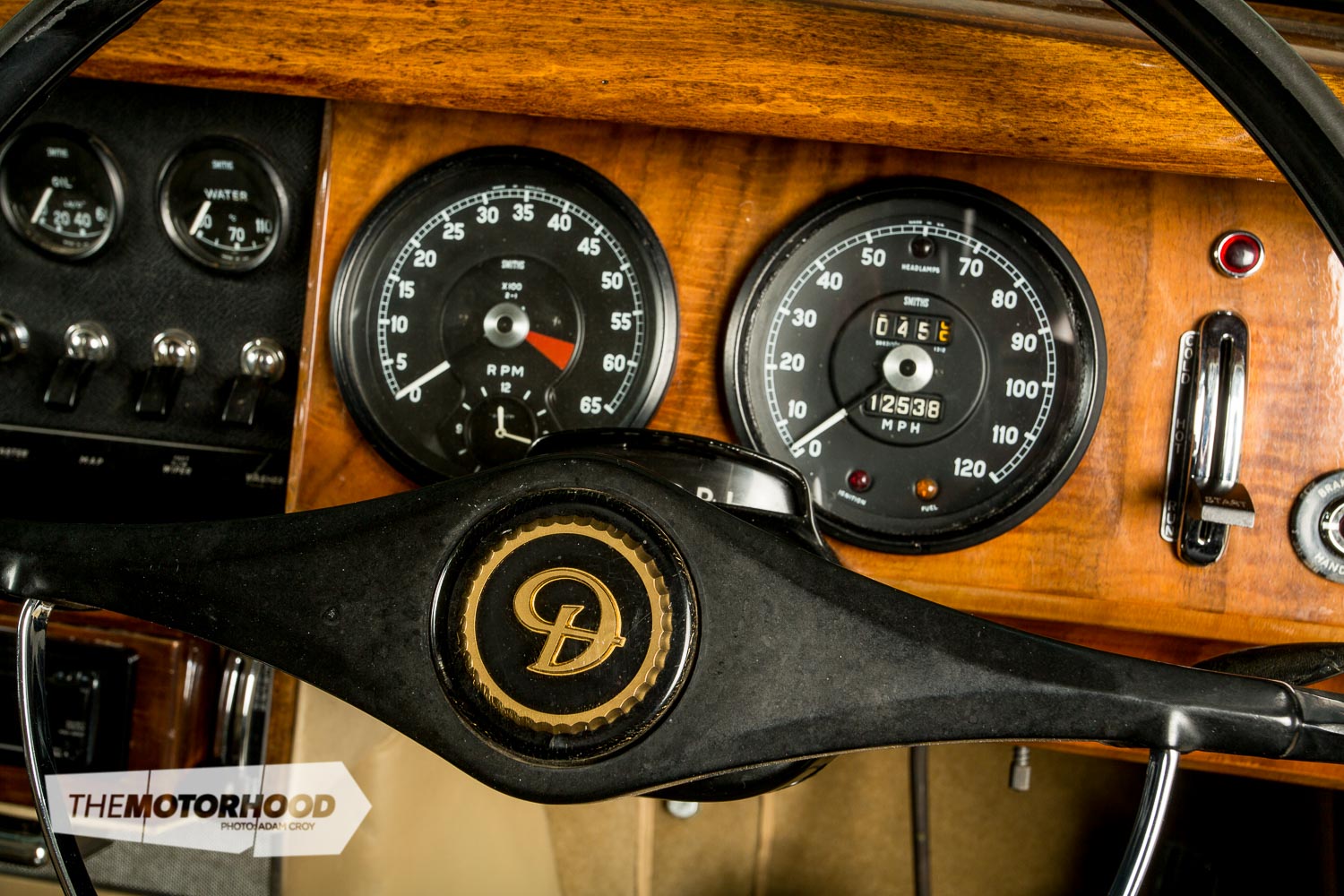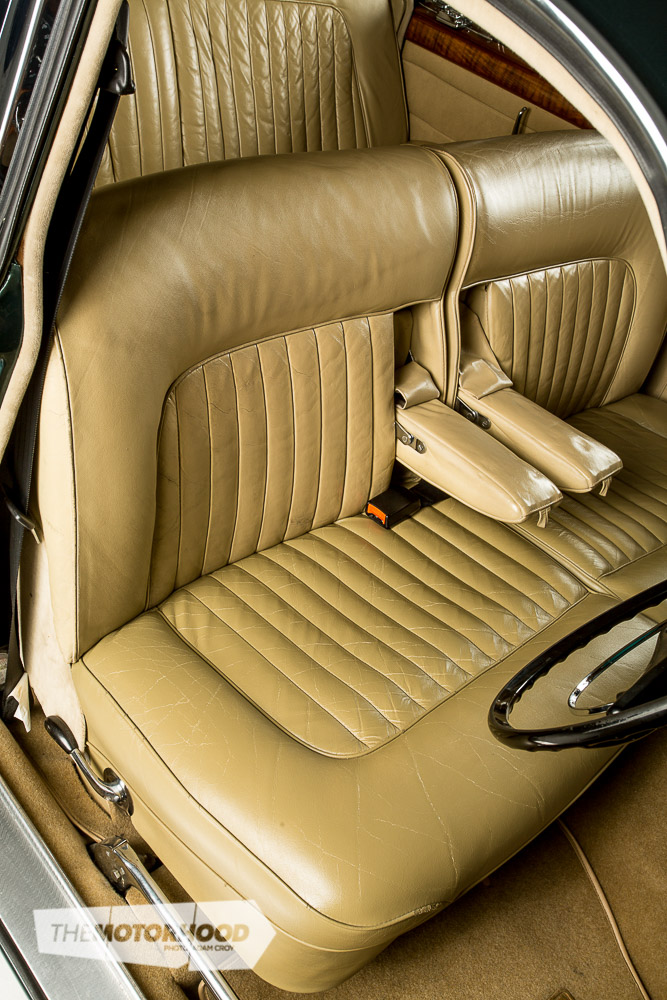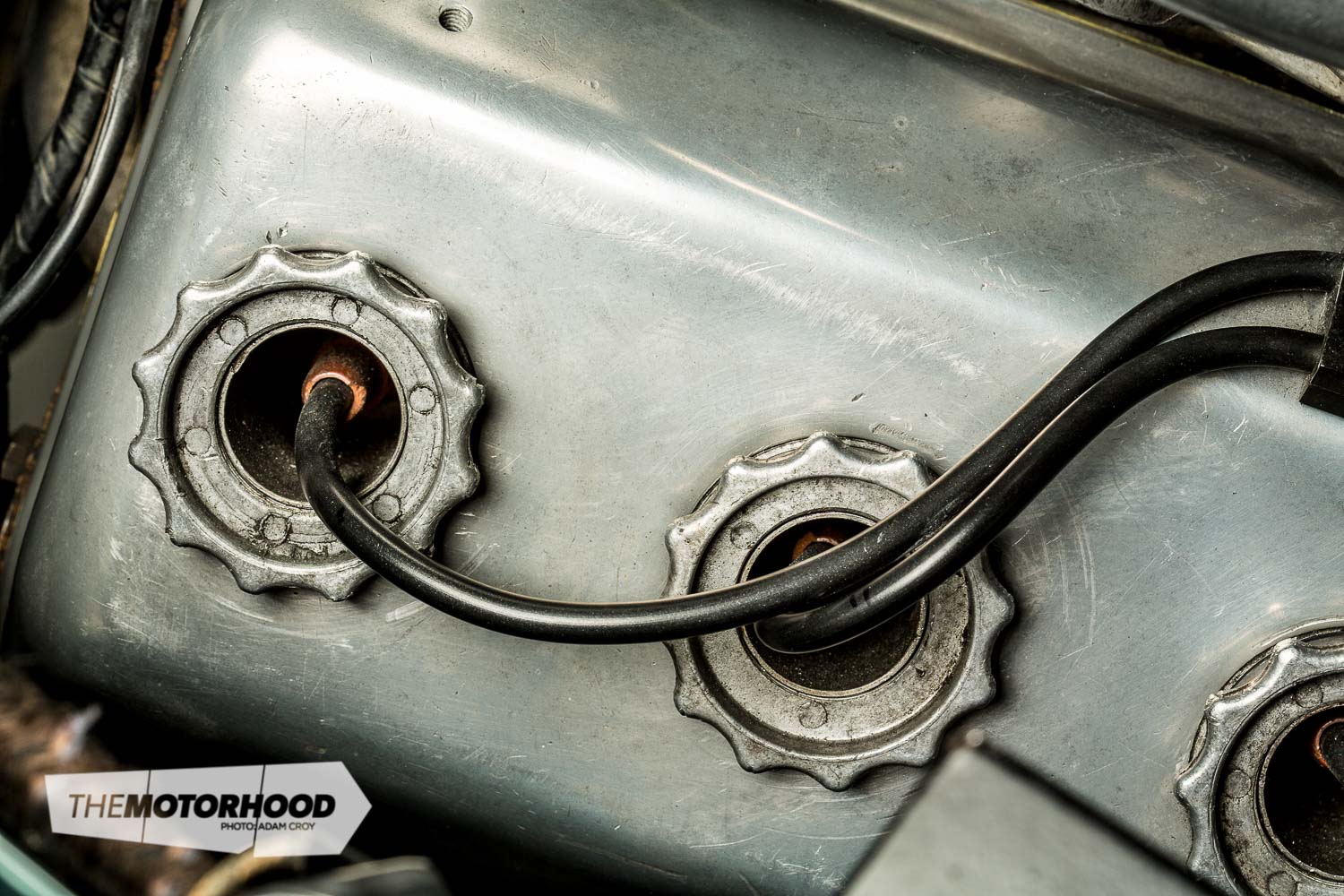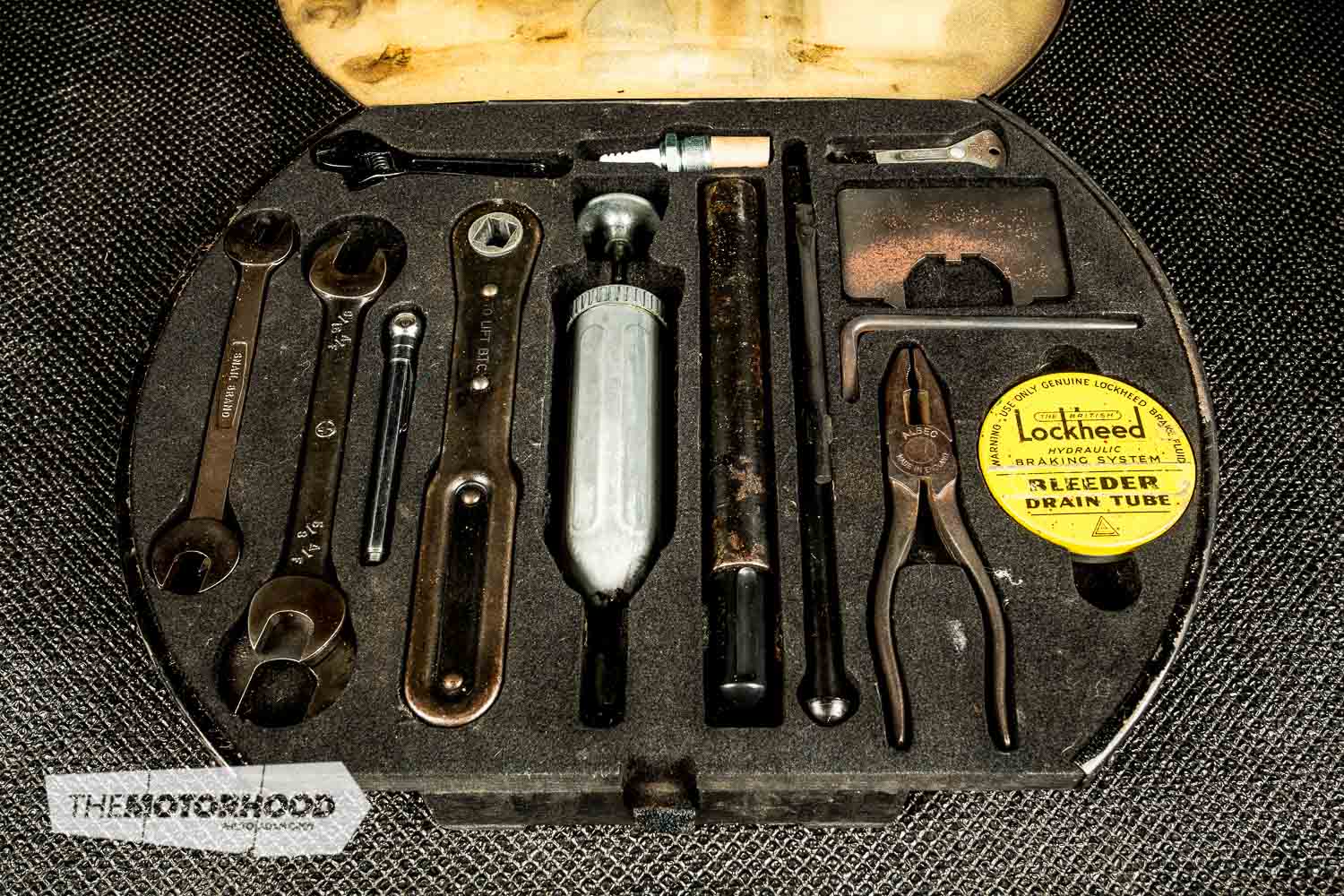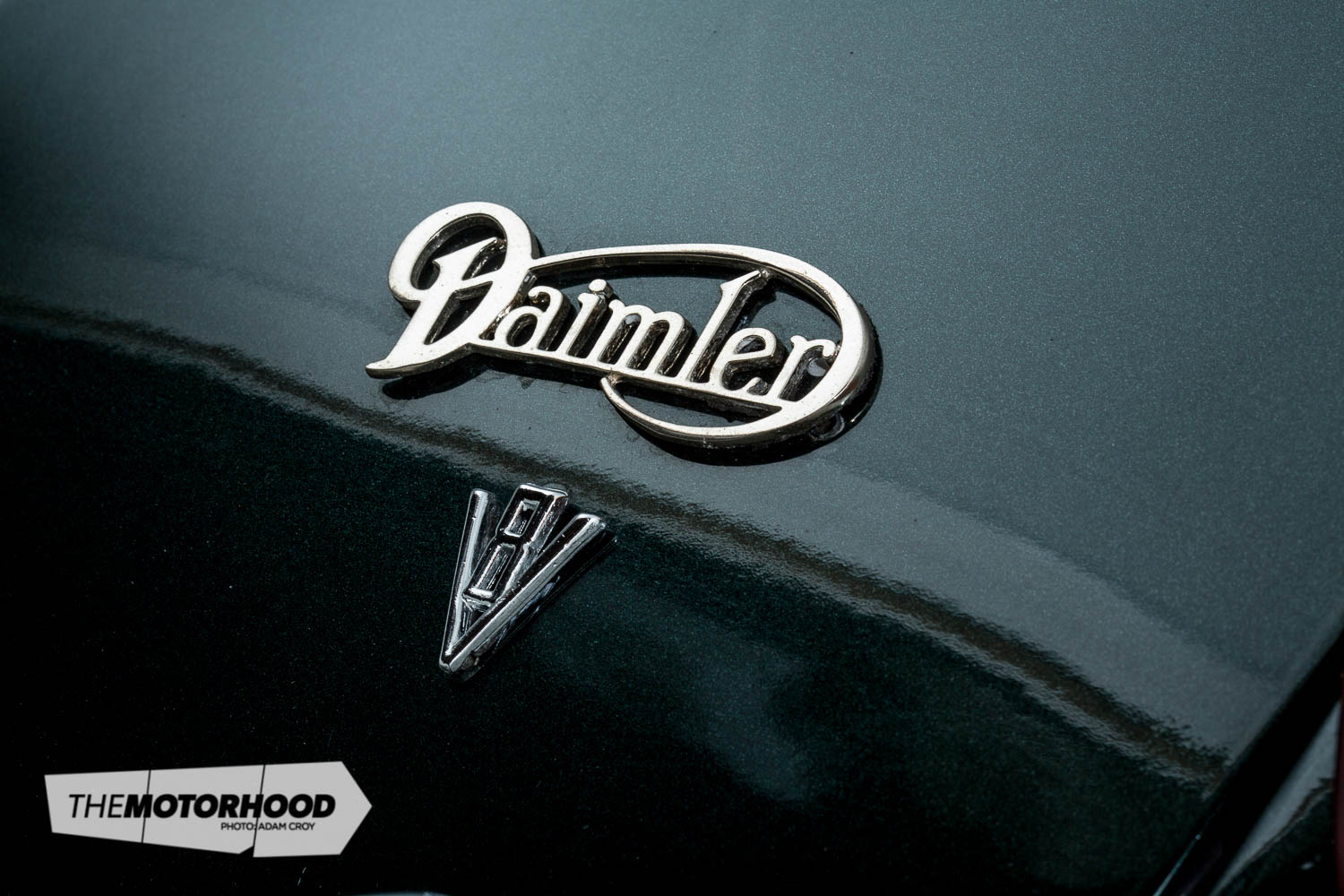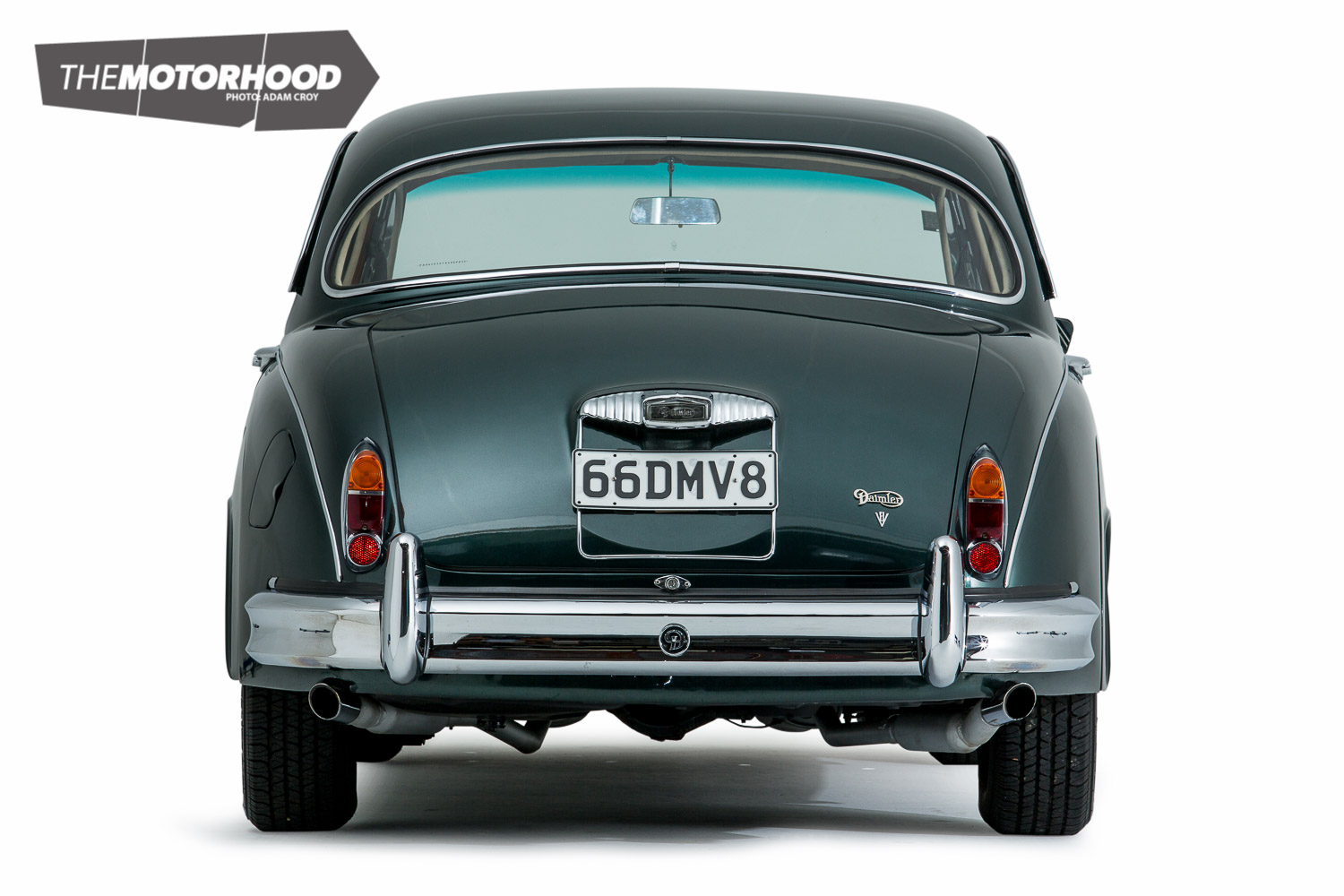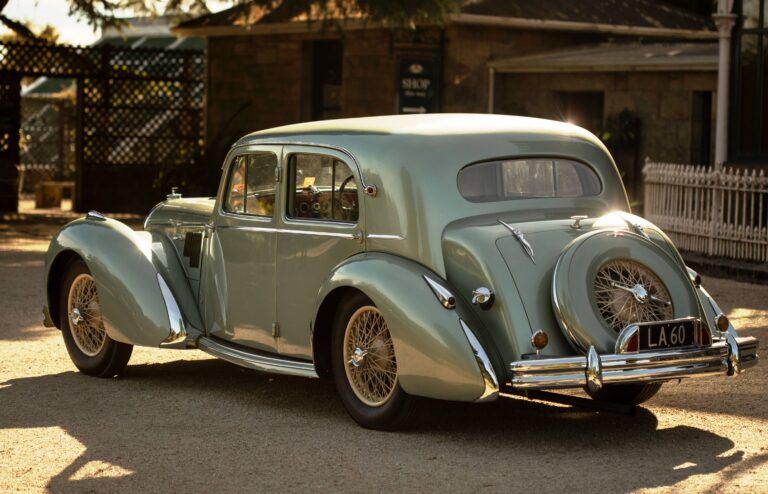In an effort to reinvigorate the Daimler marque after acquiring the company in the early ’60s, Jaguar slotted Daimler’s 2.5-litre V8 into their Mk2 body and introduced the new model in 1962. Designed by Edward Turner, this jewel of an engine truly complemented the car’s handsome and curvaceous body perfectly.

Keeping costs to a minimum, the Mk 2 Jaguar bodyshell received only minor modifications, including a revised rear valance to accommodate the V8’s twin-exhaust tail pipes plus a few alterations to the engine mounts.

Despite the Daimler wearing many Jaguar Mk2 trim items, the Daimler, got its own entirely redesigned grille consisting of the marque’s long-established sculptured flutes across the top of the surround. The grille was devoid of any engine size badge; instead, this appeared on the boot lid in the shape of a redesigned traditional ‘Daimler’ script and V8 emblem. Following on from the handsome grille design, the chrome-plated number plate surround also sported those trademark flutes.

To complete the Daimler’s new identity, new wheel trims were fitted boasting a chromed ‘D’ motif against a black background in the centre section.

The interior also received a minor makeover. Gone was the centre console that graced the Jaguar’s interior — this was replaced with a small panel under the centre of the dash panel, finished in walnut veneer to match the main dashboard. Other differences included a split front-seat arrangement, with twin centrally mounted armrests and recliners offered as options. Daimlers also shared the same steering wheel as their Mk2 cousin, the only difference being the ‘D’ badging in the centre. Unlike late-’60s Jaguars, the Daimler never suffered the indignity of vinyl upholstery as it was treated to full-leather trim. To put in bluntly, the Daimler may have been considered a ‘bitza’ when it emerged from Coventry back in 1962, but this stylish, luxuriously appointed combination proved to be one of the finest cars of its era.

This pristine example has been lovingly cared for by its current owner and has received a total restoration. The finishing touches include 205/70 R15 Cooper whitewalls, new exhaust system, and tail pipes. The front seats have been replaced, and many hours have been spent fettling the engine to the point that the Turner V8 now purrs and sounds absolutely fantastic.

So, this Daimler continues the journey it first set out on 48 years ago — still capable of bringing a smile to onlookers and other road users, as well as giving the driver an extreme amount of pleasure.

This car is reluctantly offered for sale due to another classic car purchase. For further details refer to the Editors’ Pick in our special January issue of New Zealand Classic Car magazine — celebrating 300 issues of the magazine — on sale December 14.

